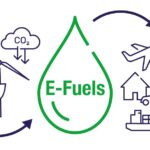In the quest for a cleaner, more sustainable energy future, biofuels have emerged as a promising solution. With the increasing concerns over climate change, depleting fossil fuel reserves, and the need to reduce greenhouse gas emissions, biofuels offer a viable alternative that can help us transition towards a more sustainable and environmentally friendly energy landscape. In this blog post, we’ll delve into the world of biofuels, exploring their types, production processes, benefits, challenges, and their potential role in shaping our energy future.
What are Biofuels?
Biofuels are renewable fuels derived from biological materials, primarily plant and animal sources. They offer an attractive alternative to conventional fossil fuels like coal, oil, and natural gas, which contribute significantly to global warming and air pollution.
Types of Biofuels
Biofuels can be broadly categorized into three main types:
First-generation biofuels:
These are derived from edible crops like corn, sugarcane, and vegetable oils. They include bioethanol and biodiesel, which can be blended with or directly replace conventional gasoline and diesel fuels, respectively.
Second-generation biofuels:
These are produced from non-edible feedstocks such as agricultural residues (crop stalks, husks, etc.), wood chips, and dedicated energy crops like switchgrass. Second-generation biofuels are more sustainable as they avoid the ethical and environmental issues associated with using food crops for fuel.
Third-generation biofuels:
These utilize algae and other microorganisms to convert sunlight and carbon dioxide into biofuels. Algae, for instance, can produce high amounts of oil rich in lipids, which can be refined into biodiesel.
Again they are classified as Primary Biofuels and Secondary Biofuels
Primary Biofuels:
Primary biofuels encompass organic materials utilized as an immediate energy source, devoid of any preliminary treatment or processing. Timber, wood chips, pellets, and other wood variants traditionally employed for heating and cooking, particularly in less developed regions where alternative fuel sources are scarce, fall under the umbrella of primary biofuels. While less prevalent, primary biofuels can also find utility in electricity generation.
Secondary Biofuels:
On the other hand, secondary biofuels pertain to biomass employed for energy generation subsequent to undergoing a processing phase. Prominent instances of secondary biofuels include liquid biofuels gaining momentum within the transportation sector, notably bioethanol and biodiesel. These biofuels also find application in industrial operations and biomass-based power plants.
The predominant utilization of biofuels predominantly occurs within domestic contexts, often in economically disadvantaged nations where alternative energy sources are limited. This employment is primarily geared towards water heating for daily activities like cooking, washing, and cleaning, or for residential space heating. A staggering 80% of current biofuel consumption serves this purpose. In parallel, 18% of known biofuel usage is directed towards industrial processes, while a mere 2% is allocated as feedstock for vehicles within the transportation industry. Nonetheless, this latter application is progressively gaining traction as individual motorists, automotive manufacturers, and national governments increasingly recognize the imperative to enhance the emissions performance of vehicles.
Biofuel Production Processes
The production of biofuels involves various complex processes, depending on the type of feedstock used. Here’s a brief overview of the production processes for bioethanol and biodiesel:
Bioethanol Production:
Fermentation:
In the case of bioethanol, sugars from feedstocks like corn or sugarcane are extracted and fermented by microorganisms like yeast. This fermentation process yields ethanol and carbon dioxide.
Distillation: The ethanol is then separated from the fermentation mixture through distillation.
Dehydration: Further processing involves removing any remaining water to obtain high-purity ethanol suitable for blending with gasoline.
Biodiesel Production:
Transesterification: For biodiesel production, vegetable oils or animal fats are chemically processed through a transesterification reaction with an alcohol (usually methanol or ethanol) and a catalyst, resulting in biodiesel and glycerin as byproducts.
Purification:
The biodiesel is then washed and purified to remove impurities and excess alcohol.
Benefits of Biofuels
Biofuels offer a range of environmental, economic, and social benefits:
- Reduced Greenhouse Gas Emissions: Biofuels emit fewer greenhouse gases compared to conventional fossil fuels, thereby helping to mitigate climate change.
- Renewable and Sustainable: As long as there is a consistent supply of feedstock, biofuels can be continually produced, reducing reliance on finite fossil fuel reserves.
- Energy Security: Biofuels can contribute to energy independence by diversifying fuel sources and reducing dependence on imported oil.
- Rural Development: Biofuel production can stimulate rural economies through job creation in agriculture, feedstock production, and biofuel processing.
Challenges and Considerations
While biofuels hold immense promise, they also face certain challenges:
- Land Use Competition: The use of edible crops for biofuel production can lead to competition with food production, potentially raising food prices and straining food security.
- Environmental Impact: The cultivation of energy crops can lead to deforestation, habitat destruction, and increased water usage, highlighting the importance of sustainable land management.
- Energy Intensity: The energy inputs required for the production of certain biofuels, especially first-generation biofuels, can diminish their overall environmental benefits.
- Technological Advancements: Continued research and development are needed to improve the efficiency and scalability of biofuel production processes.
Examples of Biofuels
Biofuels encompass a diverse range of renewable fuels derived from biological sources. These fuels offer alternatives to conventional fossil fuels and have the potential to reduce greenhouse gas emissions and promote sustainable energy practices. Here are some examples of biofuels:
- Bioethanol: Bioethanol is a widely used biofuel derived from the fermentation of sugars in crops like corn, sugarcane, and wheat. It is commonly blended with gasoline to create ethanol-gasoline blends such as E10 (10% ethanol, 90% gasoline) and E85 (up to 85% ethanol). Bioethanol is primarily used as a transportation fuel.
- Biodiesel: Biodiesel is produced from vegetable oils, animal fats, or recycled cooking oil through a process called transesterification. It can be used as a direct replacement for or blended with diesel fuel. Biodiesel reduces greenhouse gas emissions and enhances engine lubricity.
- Cellulosic Ethanol: Cellulosic ethanol is produced from non-food feedstocks like agricultural residues (corn stover, wheat straw), wood chips, and dedicated energy crops (switchgrass). It offers the advantage of using waste materials and non-food biomass, reducing concerns about land use competition.
- Algal Biofuel: Algae can be cultivated to produce oils rich in lipids that can be converted into biofuels, including biodiesel and renewable diesel. Algal biofuels have high growth rates, require minimal land, and can use non-potable water sources.
- Renewable Diesel: Renewable diesel is produced through hydrotreating or hydrocracking of fats and oils, similar to the process used to produce petroleum-based diesel. It offers similar properties to conventional diesel but with lower emissions.
- Biogas: Biogas is produced from the anaerobic digestion of organic matter such as agricultural waste, food waste, and sewage. It primarily contains methane and carbon dioxide and can be used for electricity generation, heating, and vehicle fuel.
- Syngas: Syngas is a mixture of hydrogen and carbon monoxide produced through gasification of biomass. It can be converted into liquid biofuels such as synthetic gasoline or diesel through additional processes.
- Hydrogen from Biomass: Hydrogen can be produced from biomass through processes like gasification or reforming. It can be used in fuel cells to generate electricity for vehicles or other applications.
- Methanol: Methanol can be produced from biomass and used as an alternative fuel or fuel additive. It has applications in transportation and industrial processes.
- Biojet Fuel: Biojet fuel is a type of biofuel specifically designed for aviation use. It can be produced from various feedstocks, including algae, plant oils, and waste materials.
These examples represent a portion of the diverse array of biofuels that are being researched, developed, and utilized to reduce the environmental impact of energy consumption and promote a more sustainable energy future.
What is E10?
E10 refers to a type of gasoline blend that contains 10% ethanol and 90% conventional gasoline (referred to as E10 for “Ethanol 10”). Ethanol is a renewable biofuel derived from plant materials, usually corn, sugarcane, or other biomass sources. It is blended with gasoline to create E10 for use in vehicles with gasoline engines.
E10 is a common type of biofuel blend that is used as a fuel option in many countries around the world, including the United States, Canada, Brazil, and various European nations. It is often promoted as a way to reduce greenhouse gas emissions, enhance octane ratings, and decrease reliance on fossil fuels. Here are some key points about E10:
- Environmental Benefits: Ethanol is considered a cleaner-burning fuel compared to pure gasoline, as it has a lower carbon content and produces fewer emissions of certain pollutants. When blended with gasoline, E10 can help reduce the overall carbon footprint of transportation.
- Octane Enhancement: Ethanol has a high octane rating, which means it can increase the octane level of gasoline when blended. Higher octane fuels can improve engine performance and efficiency while reducing the risk of engine knocking or pinging.
- Domestic Energy Source: Ethanol is often produced domestically from renewable crops, reducing dependence on imported petroleum and contributing to energy security.
- Compatibility: E10 can be used in most modern vehicles with gasoline engines without requiring any modifications. It is widely available at gas stations, making it a convenient and accessible option for consumers.
- Potential Considerations: While E10 has several benefits, there are also some considerations. Ethanol has a lower energy content compared to gasoline, which can slightly reduce fuel efficiency. In addition, some older vehicles, small engines (such as those in lawnmowers or boats), and certain specialized equipment may not be compatible with E10 due to its alcohol content, potentially causing damage or performance issues.
It’s important to note that there are other ethanol-gasoline blends with different ratios, such as E15 (15% ethanol) and E85 (a blend containing up to 85% ethanol, primarily used in flexible-fuel vehicles). These blends offer varying levels of ethanol content and come with their own advantages and limitations.
Overall, E10 represents a significant step towards incorporating renewable and more environmentally friendly fuels into the transportation sector, contributing to efforts to reduce carbon emissions and promote sustainable energy practices.
Biofuel B20
Biofuel B20 refers to a type of blended fuel composed of a mixture of diesel fuel and biofuel. Specifically, B20 is made up of 20% biodiesel (a renewable fuel derived from plant oils or animal fats) and 80% conventional diesel fuel. The “B” stands for biodiesel, and the number following it indicates the percentage of biodiesel in the blend.
B20 is often used as an alternative to pure diesel fuel in diesel engines. It offers several benefits, including reduced greenhouse gas emissions and improved lubricity, which can help prolong engine life. Additionally, using biodiesel in blends like B20 contributes to the diversification of fuel sources and can lead to a decrease in overall dependence on fossil fuels.
Biofuel Ethanol
Biofuel ethanol is a type of renewable fuel made from the fermentation of sugars found in organic materials such as crops (like corn, sugarcane, and wheat) and other plant materials. During the production process, the sugars are converted into ethanol through the action of microorganisms like yeast.
Ethanol is most commonly used as a blending component with gasoline to create biofuel blends, such as E10 (10% ethanol, 90% gasoline) or E85 (up to 85% ethanol, primarily used in flexible-fuel vehicles). Biofuel ethanol is known for its high octane rating, which can improve engine performance, and its potential to reduce greenhouse gas emissions when compared to pure gasoline.
Sequential Biofuel
Sequential biofuel refers to a concept where multiple generations or types of biofuels are produced and utilized in a specific order or sequence. This approach is often adopted to optimize the efficiency and sustainability of biofuel production and utilization.
For instance, in a sequential biofuel strategy, first-generation biofuels (like corn-based ethanol or vegetable oil-based biodiesel) might be initially produced and utilized while research and development continue to improve and scale up second-generation and third-generation biofuel production technologies. As these advanced biofuels become more economically viable and efficient, they can gradually replace or supplement the use of earlier-generation biofuels.
The sequential biofuel approach allows for a gradual transition from more conventional biofuels to more advanced and sustainable alternatives, ensuring a continuous improvement in the environmental and economic performance of biofuel utilization over time.
Can Biofuel Replace Fossil Fuel?
Biofuels have the potential to play a significant role in reducing our reliance on fossil fuels and mitigating the environmental impacts associated with burning traditional petroleum-based fuels. However, the complete replacement of fossil fuels with biofuels presents both opportunities and challenges that need to be carefully considered.
Opportunities for Biofuel Replacement of Fossil Fuels
- Reduced Carbon Emissions: One of the primary advantages of biofuels is their potential to reduce greenhouse gas emissions. Biofuels, especially advanced or second-generation biofuels, have lower carbon footprints compared to fossil fuels because the carbon dioxide released during their combustion is offset by the carbon dioxide absorbed during the growth of the biomass used to produce them.
- Energy Security: Biofuels can enhance energy security by diversifying fuel sources and reducing dependence on imported fossil fuels. This is particularly important for countries that rely heavily on energy imports.
- Renewable Resource: Unlike finite fossil fuel reserves, biofuels are derived from renewable feedstocks like crops and algae. As long as sustainable practices are implemented in feedstock cultivation and production, biofuels can be continually produced.
- Local Economic Benefits: Biofuel production can stimulate rural economies by creating jobs in agriculture, feedstock production, and biofuel processing.
Challenges and Considerations
- Land Use Competition: A major concern with biofuels is the competition for land between food and fuel production. Using edible crops for biofuel production could potentially lead to increased food prices and threaten food security.
- Resource Intensity: The production of some biofuels, particularly first-generation biofuels, can be resource-intensive in terms of water, energy, and land use. Balancing these inputs with environmental benefits is crucial.
- Indirect Land Use Change: Expanding biofuel production could lead to indirect land use changes, such as deforestation, which could negate some of the environmental benefits of biofuels.
- Technical Challenges: The scalability and efficiency of advanced biofuel production technologies are still being developed. Research and development are needed to improve production processes and make them economically viable.
- Infrastructure Compatibility: Some biofuels may require modifications to existing infrastructure or engines, which could slow down their adoption.
- Competition with Other Renewable Sources: Biofuels are not the only renewable energy option. Electricity generated from solar, wind, and hydropower sources is also gaining traction and could provide alternative solutions to reducing carbon emissions.
While the complete replacement of fossil fuels with biofuels is a complex and multifaceted challenge, biofuels undoubtedly offer a valuable and viable option to reduce carbon emissions and transition towards a more sustainable energy future. The successful integration of biofuels into our energy mix will depend on continued advancements in technology, responsible land management, and a comprehensive approach that considers economic, social, and environmental factors. It’s likely that a combination of biofuels, along with other renewable energy sources and energy efficiency measures, will contribute to a more sustainable and diversified energy landscape.
Conclusion
Biofuels represent a crucial stepping stone in our journey towards a sustainable energy future. While challenges exist, ongoing research, technological advancements, and a shift towards second and third-generation biofuels can help address these issues and unlock the full potential of biofuels as a clean, renewable energy source. By embracing biofuels and integrating them into our energy systems, we can reduce our carbon footprint, enhance energy security, and pave the way for a more resilient and environmentally conscious world.






